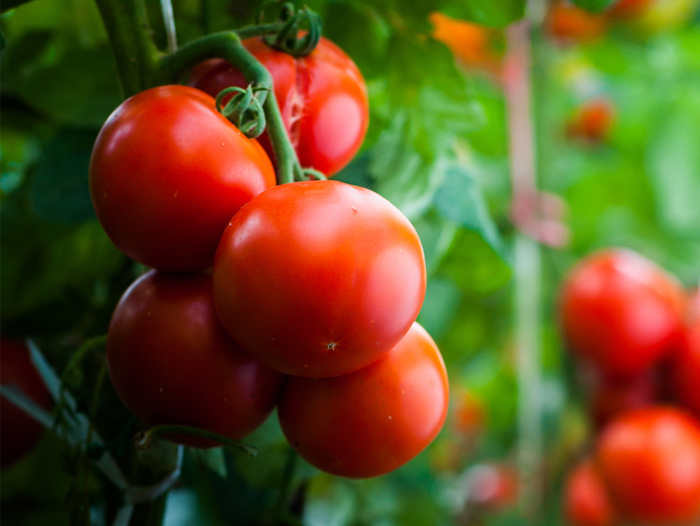Imported Greenhouse Tomatoes From Mexico Illustrate the Growing Diversity in Fresh-Market Tomatoes
May 7, 2019 | 2 min to read

As the U.S. fresh-market tomato sector has evolved to provide an increasing volume and variety of globally sourced offerings, U.S. per capita availability of fresh-market tomatoes has steadily risen. Growing imports, changing consumer demographics and tastes, and emerging production technology are among the major factors shaping the fresh tomato market. One illustration of the convergence of these drivers comes from the rising availability of greenhouse-grown tomatoes, which provide year-round access to more diverse tomato varieties than were previously available. In 2017, greenhouse tomatoes accounted for approximately 56 percent of total imported fresh tomatoes and about 32 percent of total domestic supply.
Prior to 2005, U.S., Mexican, and Canadian growers each contributed about 300 million pounds of greenhouse tomatoes annually to the U.S. fresh-tomato market. Since then, Mexico’s share of the greenhouse tomato market has grown sharply, averaging 35 percent annual growth, in parallel with expanding shipments of field-grown fresh tomatoes from Mexico to the United States. In 2017, imports from Mexico accounted for almost 84 percent (1.8 billion pounds) of the greenhouse-tomato volume coming into the U.S. market. Imports of Canadian greenhouse-grown tomatoes have remained at about 300 million pounds.
Greenhouse-tomato producers can realize many benefits (as compared to producers of field-grown fresh tomatoes), including greater market access in the off-season, better product consistency, and improved yields. These benefits make greenhouse tomato production an increasingly attractive alternative to field production despite higher production costs. Traditionally, imported fresh-market tomatoes were counter-seasonal to the domestic supply. However, greenhouse production is changing that import/domestic supply cycle, especially for some varieties that are easily cultivated in a protected environment, such as cherry and grape tomatoes.
To read the rest of the story, please go to: USDA ERS
